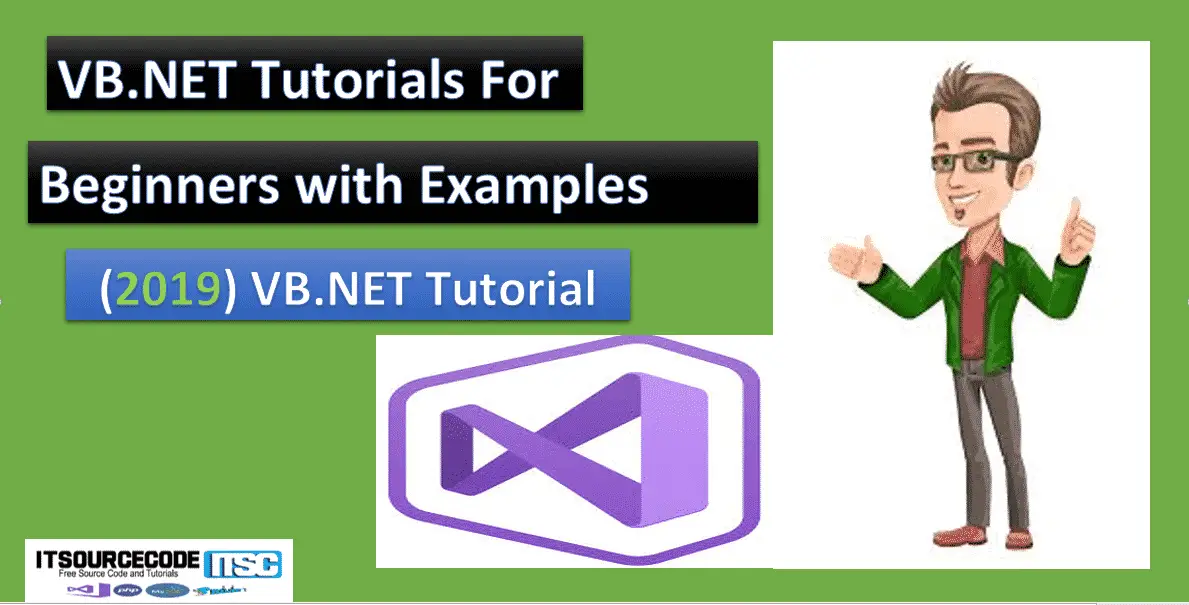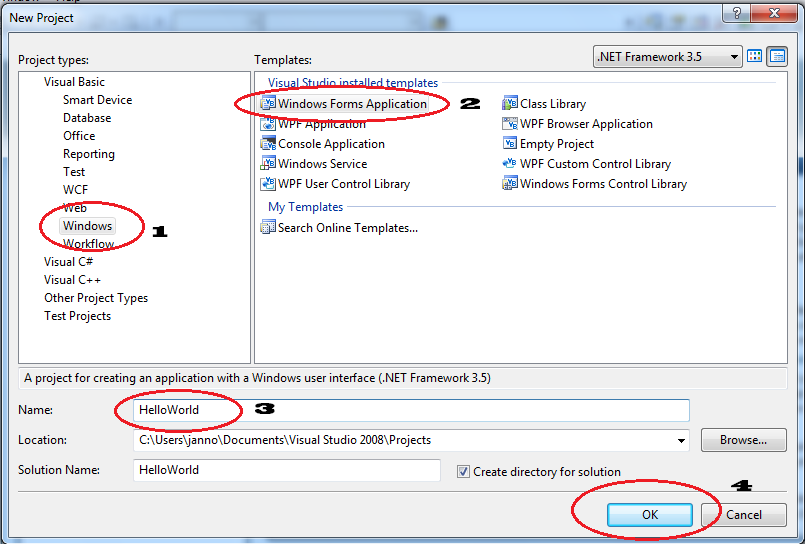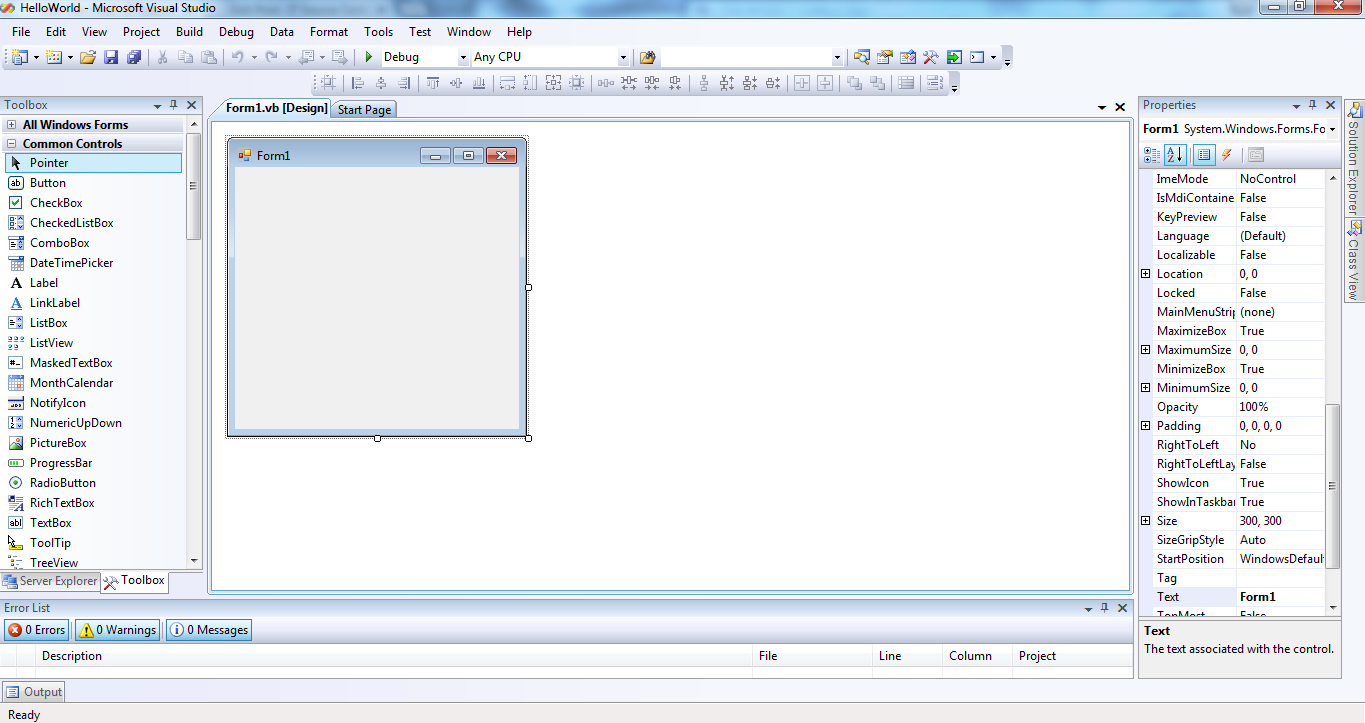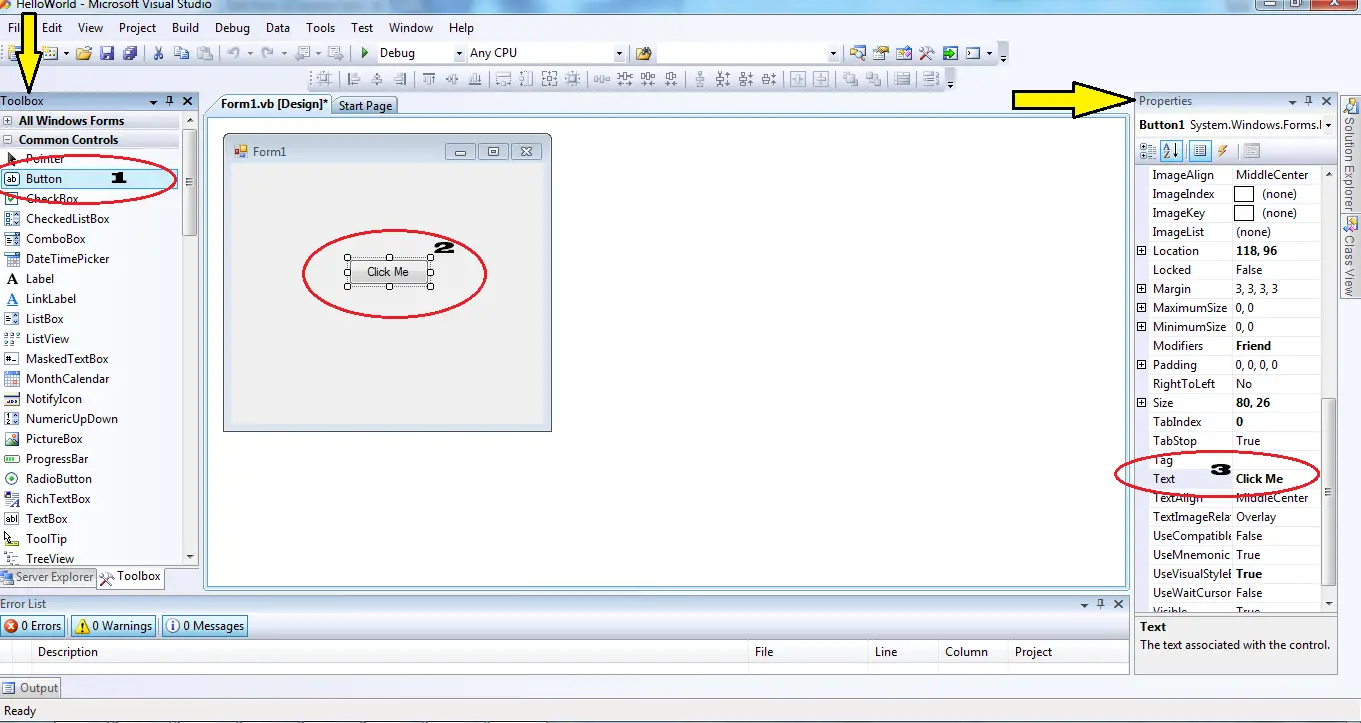VB.NET Tutorial for Beginners with Examples
Welcome to VB.NET Tutorial for Beginner with Examples wherein this section will help you learn how to code with Visual Basic (.Net) the easiest way.
Others may say that Visual Basic or VB.NET is not a good programming language, but their ideas are wrong because, with Visual Basic, you can build Windows applications, web applications, and Windows phone applications.
And on the Internet, you can find a lot of applications used that are made of Visual Basic.
In general, Visual Basic(VB) is a computer programming and integrated development environment (IDE)-enabled system developed by Microsoft.
The main purpose of the basic language is to provide an easy platform to write programs that are mostly windows-based.
Take note that programs developed in Visual Basic.Net will only run on a Windows Operating System.
Let’s start making our First VB.NET Tutorial for Beginner with Examples
Let’s begin with your first project and that is the “Hello World” application. “Hello World” is the most popular source code that is being run and familiarized by many programmers.
Steps to Create Hello World project in VB.NET
Steps Hello World VB.Net
- Open VB.NET Application
Launch your Visual Basic and create a new project from the File Menu.

- Create a Windows form Application
The dialog box will open and it will look like this.

- Under Project Types
Select “Windows” under Project Types. Then, select “Windows Form Application” under the Templates. After that, type the name of the project “HelloWorld” and hit the button “OK”. ( Now, your project will look like this. )

- Add hello Word button
In the toolbox, select a Button and drag it in the Form. In the properties select “Text” and type “Click Me”.

- Start Coding
Follow the instructions below on how to add a code in your vb.net application.
Instructions for adding code to VB.NET Application
Step1. Double click the button to open the code view as shown below.(VB.NET Tutorial for Beginner with Examples)
Public Class Form1 Private Sub Button1_Click(ByVal sender As System.Object, ByVal e As System.EventArgs) Handles Button1.Click End Sub End Class
Step 2. Do this code inside the click event of the Button.
MsgBox("Hello World")The code that you have created will look like this.
Public Class Form1
Private Sub Button1_Click(ByVal sender As System.Object, ByVal e As System.EventArgs) Handles Button1.Click
MsgBox("Hello World")
End Sub
End ClassStep 3. Press F5 to run your project and click the button to fire your code in the method.(VB.NET Tutorial for Beginner with Examples)
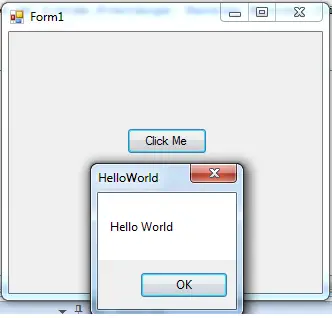
List of Topics Covered in this VB.NET Tutorial for Beginner with Examples
- VB.Net Data Types and Variable Declaration with DM
- Loops in VB.NET With Examples [Do, Do Until, For, and For Each]
- How to Create FTP Upload Application in VB.Net
- Difference Between Functions and Subs in VB.Net With Examples
- Difference Between Conditional and Logical Operators in VB.NET
- Difference Between Modules and Class In VB.NET With Examples
Inquiries
If you have any questions or suggestions about the first VB.NET Tutorial for Beginner with Examples please leave a comment below.

